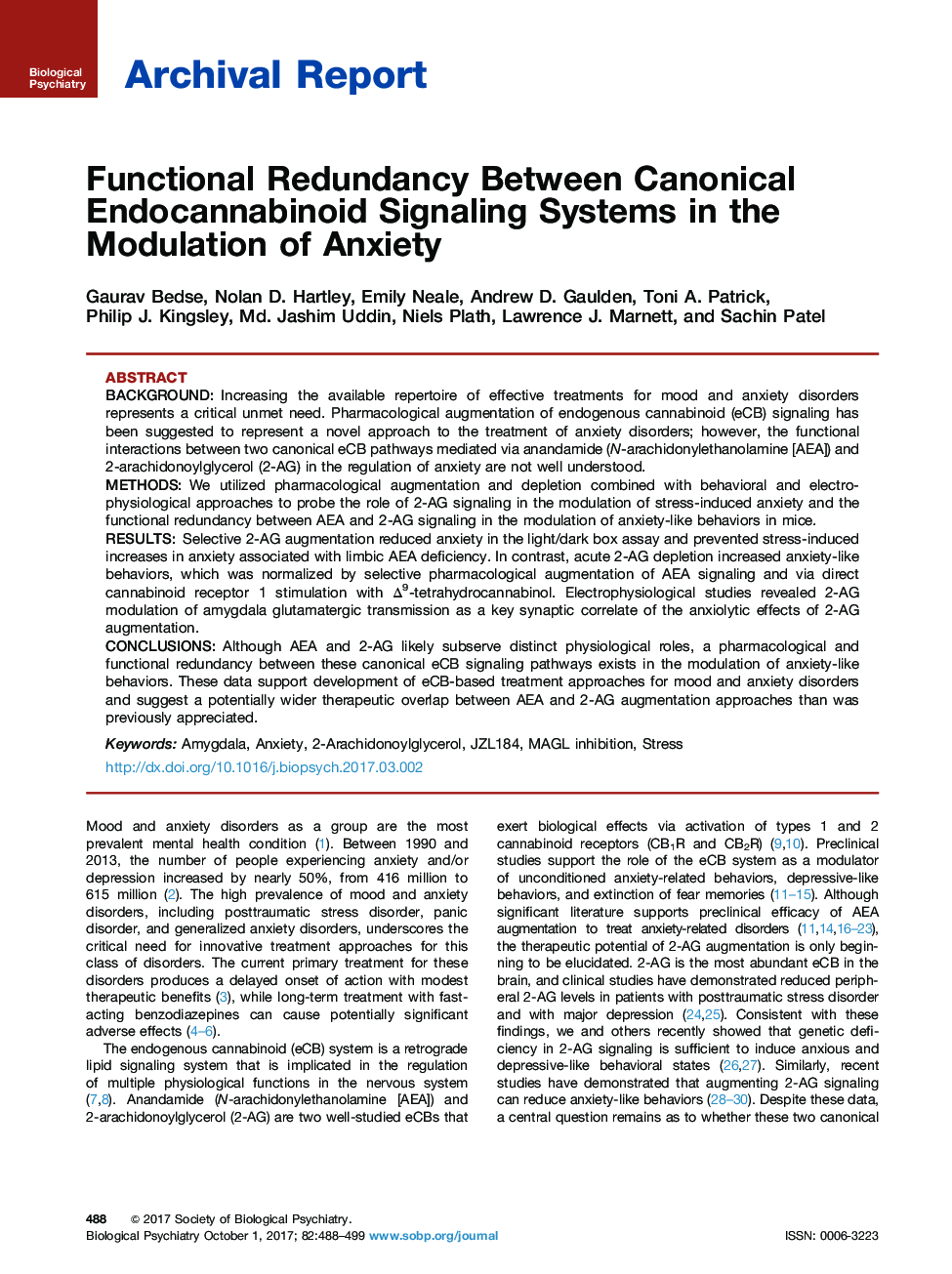| Article ID | Journal | Published Year | Pages | File Type |
|---|---|---|---|---|
| 5720545 | Biological Psychiatry | 2017 | 12 Pages |
BackgroundIncreasing the available repertoire of effective treatments for mood and anxiety disorders represents a critical unmet need. Pharmacological augmentation of endogenous cannabinoid (eCB) signaling has been suggested to represent a novel approach to the treatment of anxiety disorders; however, the functional interactions between two canonical eCB pathways mediated via anandamide (N-arachidonylethanolamine [AEA]) and 2-arachidonoylglycerol (2-AG) in the regulation of anxiety are not well understood.MethodsWe utilized pharmacological augmentation and depletion combined with behavioral and electrophysiological approaches to probe the role of 2-AG signaling in the modulation of stress-induced anxiety and the functional redundancy between AEA and 2-AG signaling in the modulation of anxiety-like behaviors in mice.ResultsSelective 2-AG augmentation reduced anxiety in the light/dark box assay and prevented stress-induced increases in anxiety associated with limbic AEA deficiency. In contrast, acute 2-AG depletion increased anxiety-like behaviors, which was normalized by selective pharmacological augmentation of AEA signaling and via direct cannabinoid receptor 1 stimulation with Î9-tetrahydrocannabinol. Electrophysiological studies revealed 2-AG modulation of amygdala glutamatergic transmission as a key synaptic correlate of the anxiolytic effects of 2-AG augmentation.ConclusionsAlthough AEA and 2-AG likely subserve distinct physiological roles, a pharmacological and functional redundancy between these canonical eCB signaling pathways exists in the modulation of anxiety-like behaviors. These data support development of eCB-based treatment approaches for mood and anxiety disorders and suggest a potentially wider therapeutic overlap between AEA and 2-AG augmentation approaches than was previously appreciated.
